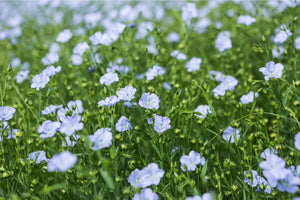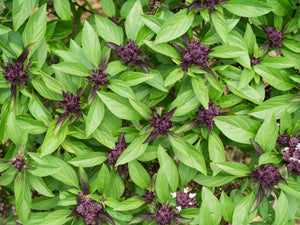Is Your Garden Ready for Winter? Discover the Benefits of Winter Mulching
Seasonal gardeningMany gardeners consider mulch to be the winter blanket that keeps their garden snug all winter. Most plants benefit from mulch, and it can be applied all year. But what about in the winter or off-season? Is this a time to apply mulch?

Should I winter mulch my vegetable garden?
Mulching in the off-season has many of the same benefits as mulching during the growing season. Winter mulching can retain moisture, suppress weed growth, and protect bare soil from erosion. You may be tempted to wait until spring to apply mulch. But if you can do it now, that’s one less thing you have to do in the spring, and the benefits will outweigh the extra effort you put in today.

Benefits of Winter Mulching
Conserve Moisture
One thing mulching does is conserve moisture. Moisture is important even when you aren’t growing plants because there’s a whole host of microbial activity going on in the soil. This activity will continue through the winter with the right amount of moisture.
Weed Suppression
You’ll be glad you don’t have to waste time pulling weeds when you start planting in the spring. Applying a layer of winter mulch will help keep weeds from sprouting.
Combat Soil Compaction
As snow and ice collect on top of your garden beds, mulch can provide layers of air to keep the weight from compacting the soil. Soil aeration is essential to the garden. Roots need air to respire and release energy. Also, all those soil microorganisms need oxygen. You will get stronger and deeper roots if you have aerated soil.
Protect From Root Heaving
Winter mulching can protect the perennials from the freeze/thaw ups and downs. When temperatures fluctuate, the soil will freeze and then thaw. This can happen many times during the early winter. The fluctuation can cause roots to heave and expose tender growth buds. With an appropriate layer of mulch, the soil will retain a more consistent temperature to protect the plant.
Get a Jump on Spring Growth
Once the ground is frozen, there won’t be as much microbial activity and decomposition in the soil. But in early spring, your garden soil will start to warm up and be active even before you’re ready to go outside.
Protect Bare Soil
The most basic reason to apply a layer of winter mulch is to keep bare soil from washing away.

What kind of mulch should I use?
To answer this question, decide what you want the mulch to do. Do you want to improve your soil? Do you need to protect perennial plants? Are you just looking to make your landscape more visually appealing?
Types of mulch
There are all kinds of choices regarding mulch. Knowing what results you want will help you choose what type of mulch to use. For example, do you want to add carbon or nitrogen to your soil? Straw, hay, wood chips, leaves, and sawdust add carbon. Grass clippings and composted manures add nitrogen. Pine needles will make the soil more acidic.
Leaves
Leaves are our favorite and most abundant source of winter mulch at Sow Right Seeds. Unless the leaves are small, it is best to chop them up or shredded first. You can use a lawnmower for this task. Remember to avoid using Black walnut or eucalyptus leaves. You can read more about all the ways to use fall leaves in your garden.
Wood chips
Wood chips are a good choice for winter mulch around woody perennials. They discourage slugs and rodents. However, if used in a vegetable garden, wood chips need to be natural and not dyed.
Straw
Straw can be used for annuals. It’s also an especially good choice for covering strawberry plants. Since straw is lightweight, you can use thicker layers. You will need to maintain at least a 3-inch depth.
Pine needles
If you want to lower your soil's PH levels, pine needles make an excellent mulch. Since they will make the soil more acidic, use them only in areas where this will be beneficial to your plants, such as blueberries and white potatoes.
Sawdust
On empty garden beds, a layer of sawdust will look nice and add nutrients to the soil over time. However, it is acidic so keep that in mind.

When is the best time to apply winter mulch?
There are two ways to think of winter mulching to help you decide when to apply mulch. Do you want to warm up the soil, or do you want to keep it cold?
If you have fallow beds, you can apply mulch at any time since it will not disturb growing crops. Using mulch on empty garden beds will benefit the soil by keeping it from eroding or becoming compacted while also suppressing weeds and adding nutrients. Another option to mulch for fallow beds is to grow a cover crop.

Mulching Before VS After a Freeze
Deciding when to apply mulch depends on whether you are mulching bare ground or around plants.
For annual plants, you may want to extend the growing season. If you still have annual plants in the ground, apply mulch when the temperature starts to fall and there has been a light frost, but before there has been a hard freeze. Look at our blog for more information on extending the harvest and overwintering.
For mulching perennials, wait until after a hard freeze to apply mulch. Once there has been a hard freeze, the perennial will go dormant. During this dormant period, the mulch will help protect the plant from the upheaval of the freeze/thaw cycle that can happen in the early winter. The mulch also gives another layer of organic material that can benefit the soil.
How much mulch should I apply?
When you think of winter mulch as a blanket for your garden, you want to make it warm and cozy but not smothering. If there are plants under the mulch, the mulch needs to have air pockets so the plants still get oxygen.
Additional Winter Mulching Tips
- Plan to use 2-3 inches of mulch. Avoid smothering plants that have shallow roots. Plants such as Yarrow and Bee Balm need only a shallow layer of mulch.
- When using grass clippings, keep mulch in thin layers. Grass can easily become compacted and oxygen-deprived, preventing it from breaking down into the soil.
- Lasagna mulching is also an option. This involves adding layers of brown and green material and allowing it to decompose in the garden. This is part of the no-till gardening method.
- For woody plants, leave some space between mulch and plants to discourage rodents from eating the plant as they tunnel through the mulch. Also, plants can get “cankers” caused by fungi or bacteria from mulch that is too close.
- In the spring, when you no longer need a heavy blanket, remove mulch slowly so the ground warms up slowly. This will allow the perennials to start sprouting. Then, after the more severe weather is past, just move the mulch over to plant your spring crops.

The last thing you may want to consider with winter mulching is your garden walkways. Do you need more room to maneuver between beds? Did the paths get too soggy? Winter or off-season is a great time to plan your garden paths and create the garden that meets your needs.
Winter is the time to make changes to your garden design and soil to create an even better garden for spring planting. Try winter mulching and see the benefits.






Leave a comment